#marine life conservation
Text
Release of Lolita, Captive Killer Whale, to Wildlife Sanctuary Marks a Significant Step Towards Marine Life Conservation
Wildlife Sanctuary Marks a Significant Step Towards Marine Life Conservation
Lolita, a captive killer whale weighing 2,268kg, is set to be released into the ocean after spending over 50 years in captivity at a Florida aquarium. The decision comes following a deal reached between the aquarium and animal welfare advocates, including the nonprofit organization Friends of Lolita. The release plan…

View On WordPress
#animal captivity issues#animal rights organizations#animal welfare groups#captive killer whales#killer whale rehabilitation#marine animal welfare#marine life conservation#marine mammal rehabilitation#wildlife sanctuaries
2 notes
·
View notes
Text
Watch: Snorkelers, divers attend underwater music festival at marine sanctuary in Florida, US
Watch: Snorkelers, divers attend underwater music festival at marine sanctuary in Florida, US
Watch: Snorkelers, divers attend underwater music festival at marine sanctuary in Florida, US

View On WordPress
#coral reef#coral reef conservation#Florida keys#Florida Keys underwater music festival#Marine life conservation#Underwater music festival#Underwater music festival Florida#world
4 notes
·
View notes
Text
Donate to Endangered Marine Life
RomiWorld, at the forefront of marine life conservation, channels your donations to make a tangible impact. Your support contributes to the preservation of endangered marine species, ensuring the health and vitality of our oceans.
Visit here: https://romiworld.com/
#marine life conservation#forest wildlife conservation#forest wildlife protection#marine life protection#wildlife awareness campaign#wildlife education programme
1 note
·
View note
Text
This school of scalloped hammerheads was not a sight we expected to see, but what a sight it was! Experts are actually unsure why scalloped hammerheads school, but some theorize they school this way as juveniles, and continue the behavior into young adulthood!
#hammerhead shark#scalloped hammerhead#sharks#chondrichthyes#elasmobranchs#marine biology#marine bio#marine biology studyblr#marine bio studyblr#biology#zoology#marine life#animals#scuba diving#marine conservation#ocean
1K notes
·
View notes
Text

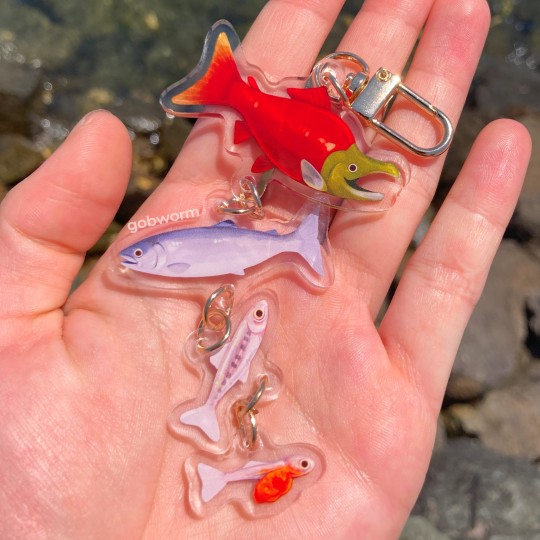
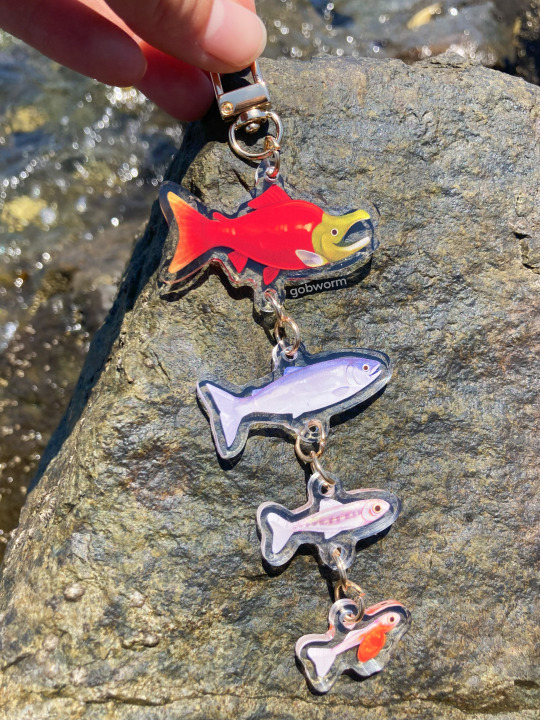
salmon life cycle charms!
buy them here!
#salmon#fish#fish biology#ichthyology#fishblr#sea creatures#marine life#marine biology#life cycle#biology#zoology#ecology#conservation#acrylic charms#small business#acrylic keychain#etsy shop#shop small#art business#digital art#artists on tumblr
3K notes
·
View notes
Text

juvenile and adult zebra shark
// Full illustration for Swim On 9: Mangroves @swimonzine
#sharks#zebra shark#gentlesharks#nature#ocean#conservation#underwater#fish#swimonzine#digital#drawing#illustration#full illustration#art#feral#zine#marine life
1K notes
·
View notes
Text
Hey if you guys care about marine life and conservation, please sign this Avaaz petition to stop the Norwegian Parliament from deep sea mining the North Sea
600 notes
·
View notes
Text
"When Francois Beyers first pitched the concept of 3D ocean farming to the Welsh regulators, he had to sketch it on napkins.
Today the seafood farm is much more than a drawing, but if you walked along the Welsh coastal path near St David’s, all you’d see is a line of buoys. As Beyers puts it: “It’s what’s below that’s important.”
Thick tussles of lustrous seaweed suspend from the buoys, mussels cling to its furry connective ropes and dangling Chinese lantern-esque nets are filled with oysters and scallops.
“It’s like an underwater garden,” says Beyers, co-founder of the community-owned regenerative ocean farm, Câr-y-Môr. The 3-hectare site is part of a fledgling sector, one of 12 farms in the UK, which key players believe could boost ocean biodiversity, produce sustainable agricultural fertiliser and provide year-round employment in areas that have traditionally been dependent on tourism.
Created in 2020 by Beyers and six family members, including his father-in-law – an ex-shellfish farmer – the motivation is apparent in the name, which is Welsh for “for the love of the sea”. ...
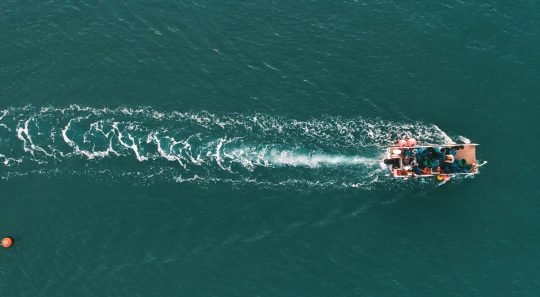
Pictured: Drone shot of Câr-y-Môr, which is on the site of abandoned mussel farms. Image: Scott Chalmers
Ocean farming comes from the technical term ‘integrated multi-trophic aquaculture’, which means a mixture of different seaweed and shellfish species growing together to mutually benefit each other. But it’s not just a way of growing food with little human input, it also creates ocean habitat.
“You’re creating a breeding ground for marine animals,” explains Beyers who adds that the site has seen more gannets diving, porpoises and seals – to name a few – since before the farm was established.
Ocean farms like Câr-y-Môr, notes Ross Brown – environmental research fellow at the University of Exeter – have substantial conservation benefits.
“Setting up a seaweed farm creates an exclusion zone so fishermen can’t trawl it,” explains Brown, who has been conducting experiments on the impacts of seaweed and shellfish farms across the UK.
Brown believes a thriving ocean farming industry could provide solutions to the UK’s fish stock, which is in “a deeply troubling state” according to a report that found half of the key populations to be overfished. “It would create stepping stones where we have safe havens for fish and other organisms,” he adds.
But UK regulators have adopted a cautious approach, note Brown and Beyers, making it difficult for businesses like Câr-y-Môr to obtain licenses. “It’s been a tough old slog,” says Beyers, whose aim is to change the legislation to make it easier for others to start ocean farms.
Despite navigating uncharted territories, the business now has 14 full-time employees, and 300 community members, of which nearly 100 have invested in the community-benefit society. For member and funding manager Tracey Gilbert-Falconer, the model brings expertise but most importantly, buy-in from the tight-knit local community.
“You need to work with the community than forcing yourself in,” she observes.
And Câr-y-Môr is poised to double its workforce in 2024 thanks to a Defra grant of £1.1 million to promote and develop the Welsh seafood industry as part of the UK Seafood Fund Infrastructure Scheme. This will go towards building a processing hub, set to be operational in April, to produce agricultural fertiliser from seaweed.
Full of mineral nutrients and phosphorous from the ocean, seaweed use in farming is nothing new, as Gilbert-Falconer notes: “Farmers in Pembrokeshire talk about their grandad going down to the sea and throwing [seaweed] on their farms.”
But as the war in Ukraine has caused the price of chemical fertiliser to soar, and the sector tries to reduce its environmental impact – of which synthetic fertiliser contributes 5% of total UK emissions – farmers and government are increasingly looking to seaweed.
The new hub will have capacity to make 65,000 litres of sustainable fertiliser annually with the potential to cover 13,000 acres of farmland.
But to feed the processing hub, generate profit and reduce their dependency on grants, the co-op needs to increase the ocean farm size from three to 13 hectares. If they obtain licences, Beyers says they should break even in 18 months.
For now, Beyers reflects on a “humbling” three years but revels in the potential uses of seaweed, from construction material to clothing.
“I haven’t seen the limit yet,” he smiles."
-via Positive.News, February 19, 2024
#wales#welsh#ocean#marine biology#aquaculture#marine life#marine animals#seaweed#sea scallops#oysters#united kingdom#uk#conservation#conservation news#overfishing#environmental news#farming#sustainable agriculture#sustainability#ocean farming#good news#hope
462 notes
·
View notes
Text
HEY TUMBLR, I KNOW PROBABLY NOONE WILL SEE THIS BUT IF YOU ARE ABLE, CAN YALL DONATE TO HELP THIS FISH!
THANK YOU
381 notes
·
View notes
Text

The government of the South Georgia and South Sandwich Islands (SGSSI), which operates as a British overseas territory, recently announced that it had established new no-fishing zones over 166,000 km² (64,100 mi²) of its existing marine protected area, and prohibited krill fishing in an additional 17,000 km² (6,600 mi²) of the MPA.
These new no-fishing zones were established to protect krill-dependent marine wildlife, including baleen whales and penguins, while also considering the fisheries operating in the area, which target krill and other species.
While conservationists initially pushed for further protections, they ultimately accepted the decision, with one calling it a “positive and good outcome.”
However, Argentina, which claims the South Georgia and South Sandwich Islands as part of its Tierra del Fuego province, has expressed its dissatisfaction with the SGSSI government’s decision.
#good news#environmentalism#science#environment#nature#animals#conservation#marine life#marine biology#ocean life
323 notes
·
View notes
Text
BREAKING NEWS
NOAA considers sanctuary in waters around Pacific Remote Islands

Today, NOAA announced it is starting the process to potentially designate a new national marine sanctuary in the Pacific Remote Islands area under the Biden-Harris Administration. The proposed area in the central Pacific Ocean includes marine areas within the existing Pacific Remote Islands Marine National Monument, as well as currently unprotected submerged lands and waters, an area totaling about 770,000 square miles.


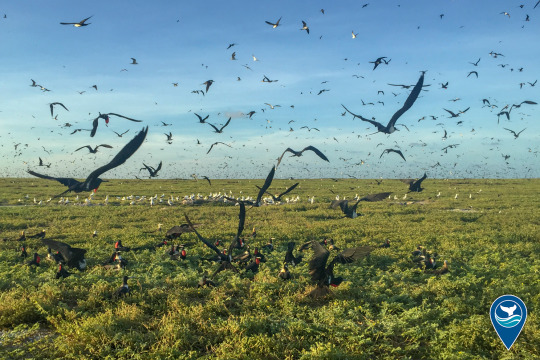

A sanctuary designation would help conserve the atolls, shoals, seamounts, banks and reefs surrounding the Pacific Remote Islands. This area is home to some of the most diverse and remarkable tropical marine ecosystems on the planet, and provides a haven for a host of wildlife, including corals, sharks, fish, marine mammals, seabirds and invertebrates.

NOAA invites the public to comment on the proposed sanctuary designation through June 2, 2023.
#EarthIsBlue#NOAA#News#Science#Marine Conservation#Breaking News#National Marine Sanctuary#Science News#Conservation#Ocean#Pacific Remote Islands#Pacific#Sea#Marine Life#Earth#Nature
1K notes
·
View notes
Text
Animal of the Day!
Greenland Shark (Somniosus microcephalus)
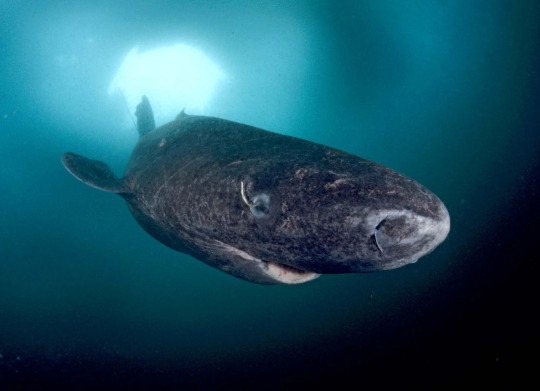
(Photo from Britannica)
Conservation Status- Vulnerable
Habitat- Northern Atlantic; Arctic Ocean
Size (Weight/Length)- 4 m
Diet- Fish; Seals; Small whales
Cool Facts- The world’s oldest Greenland shark may have witnessed the first European boats making their way across the Atlantic to reach the Americas. It is estimated that Greenland sharks can live anywhere from 250 years old all the way to 500. They are extremely slow growing, most likely due to the freezing waters they live in. These sharks are not sexually mature until they turn 150 and a pregnancy can last up to 18 years. They are slow moving, apex predators, targeting sick or sleeping animals which can include moose or caribou swimming between islands. Unfortunately, Greenland sharks are killed for their flesh that is considered a delicacy in Iceland. Overhunting, bycatch, and an extremely slow generation time are the leading reasons for the decline of Greenland shark populations.
Rating- 12/10 (Most of what we know about them is conjecture.)
#animal of the day#animals#sharks#marine life#marine biology#friday#january 5#greenland shark#biology#science#conservation#the more you know
216 notes
·
View notes
Text
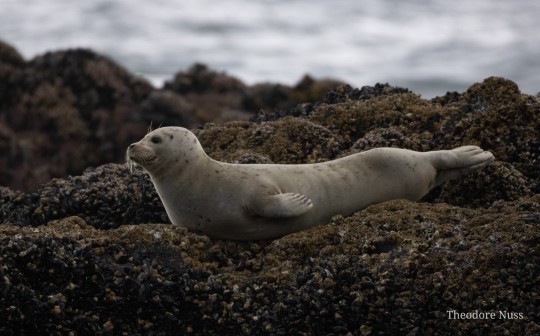

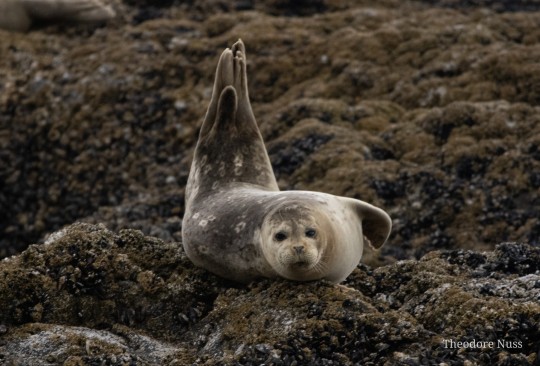

A few harbor seals I like watching on cloudy days.
#nature#photography#pnwisbeautiful#wildlife#wildlife photography#conservation#oregon#pnw vibes#seals#harbor seal#oregon coast#marine mammals#marine life
249 notes
·
View notes
Photo


Pagophilus groenlandicus or Harp Seals
After about three to four weeks, Harp Seals lose their white fur. They get their name from the black patches on their backs that resemble harps. They’re also believed to be the most abundant species of Pinniped (seals, sea lions, walruses) in the Northern hemisphere!
#marine life#marine biology#marine bio#seals#harpseals#harp seals#cute animals#science#biology#ecology#zoology#animal gifs#fun facts#cute animal gifs#nature#earth#wildlife#conservation#baby animals
852 notes
·
View notes
Text

🦈Shark Awareness Day🦈
July 14th - Sharks, skates and rays belong to a subclass of fish called 'Elasmobranchii', being notable for their primarily cartilaginous skeletons and unique diversity.
Sharks play a vital role in maintaining stable ocean environments; by removing sickly fish, and controlling overpopulation of either invasive or smaller predatory fish in certain ecosystems. Filter feeders and sand sifters are just as important, being a part of the ocean's clean-up crew and nutrient cyclists.
Unfortunately, over one-third of these species are at risk or threatened with extinction due to climate change and misconceptions being spurred on by popular media over the years (Jaws, Shark Week, etc.). The loss of these animals would lead to a decline in ocean ecosystem health around the world.
#geeks stuff#geeks art#shark awareness day#it's also world orca day too#ocean conservation#marine life#marine biology#animals#sharks#basking shark#whale shark#nurse shark#thresher shark#sawfish#animal art#animal activism
376 notes
·
View notes
Text

Banded moray
// Full illustration for @seaunseenzine vol.2
#moray#moray eel#banded moray#eels#fish#ocean#nature#conservation#art#drawing#digital#illustration#full illustration#zine#sea unseen#feral#f#clouds#marine life
3K notes
·
View notes